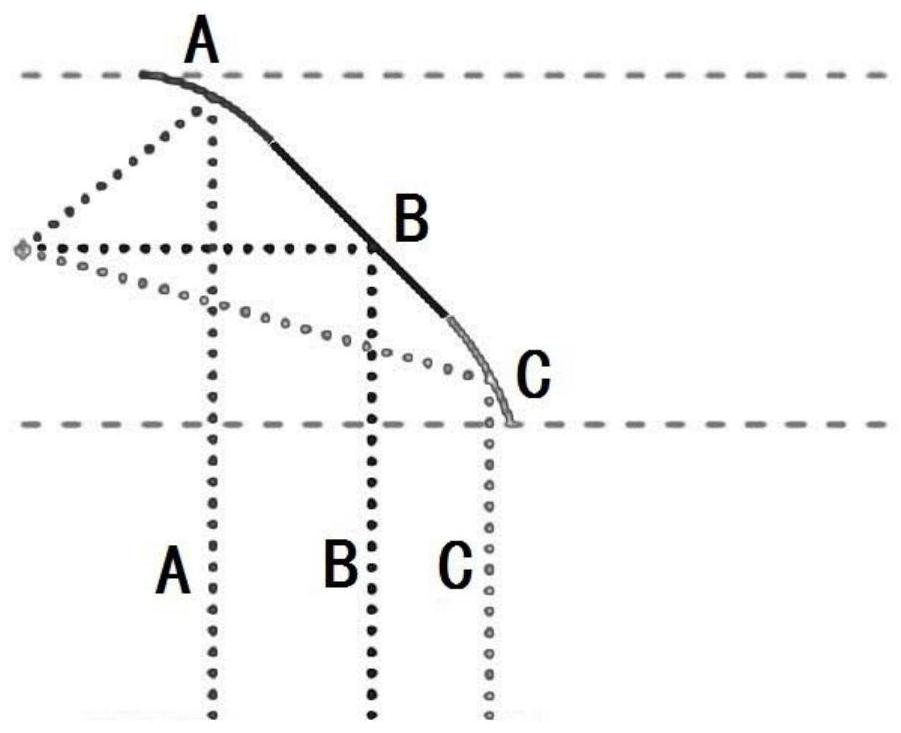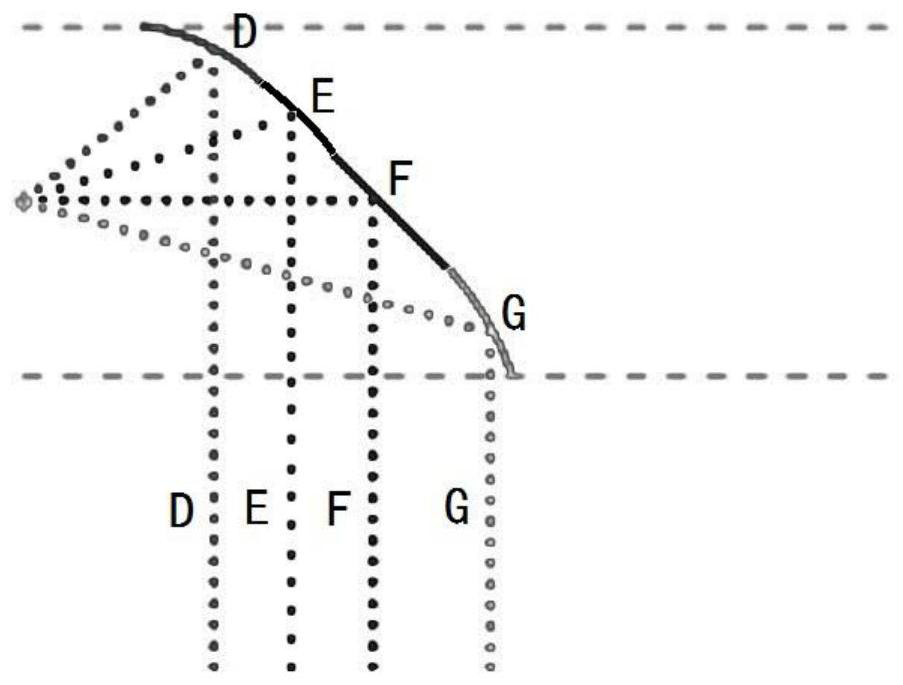Surface acoustic wave curve reflection stripe and touch screen applying same
A technology of reflection stripes and surface acoustic waves, which is applied in the field of surface acoustic wave curve reflection stripes and touch screens using the curve reflection stripes, can solve problems such as poor signals, reduce energy loss, reduce acoustic noise interference, and have strong penetrating ability Effect
- Summary
- Abstract
- Description
- Claims
- Application Information
AI Technical Summary
Problems solved by technology
Method used
Image
Examples
Embodiment 1
[0032] Embodiment 1: A surface acoustic wave curved reflection stripe, which transforms the reflection stripe from a straight line into a curve or multi-curve segment, changes the reflection angle, converges the scattered sound waves, and passes the sound waves transmitted at different angles through the reflection angle The change of the sound wave adjusts the reflection path of the sound wave, thereby forming a reflected sound wave that propagates in a straight line and parallel.
[0033] Preferably, the reflection stripes are transformed from straight lines into curves or multi-curve segments in a specific way: setting the reflection stripes as one or more different curve parts, using different curve function fittings, and changing the reflection angle, The reflected wave is propagated parallel to the straight line; said different curve function fitting is used, the specific method is: according to the different distances of the reflected stripes from the transducer, differe...
Embodiment 2
[0034] Embodiment 2: as figure 2 As shown, the difference from Example 1 is that the reflective stripes are set to a plurality of different curve parts, and the specific method is: the reflective stripes are set to three different curve parts of A, B and C (with three segment curve as an example). Use the curve fitting method to calculate the incident angles at different distances, change the fringe angles, and make the reflected waves A, B, and C propagate in parallel in a straight line.
Embodiment 3
[0035] Embodiment 3: as image 3 As shown, the difference from Embodiment 1 is that the reflective stripes are set as a plurality of different curve parts, and the specific method is: set the reflective stripes as four different curve parts D, E, F, and G. Use the curve fitting method to calculate the incident angles at different distances, change the fringe angles, and make the reflected waves D, E, F, and G propagate in parallel in a straight line.
PUM
 Login to View More
Login to View More Abstract
Description
Claims
Application Information
 Login to View More
Login to View More - R&D
- Intellectual Property
- Life Sciences
- Materials
- Tech Scout
- Unparalleled Data Quality
- Higher Quality Content
- 60% Fewer Hallucinations
Browse by: Latest US Patents, China's latest patents, Technical Efficacy Thesaurus, Application Domain, Technology Topic, Popular Technical Reports.
© 2025 PatSnap. All rights reserved.Legal|Privacy policy|Modern Slavery Act Transparency Statement|Sitemap|About US| Contact US: help@patsnap.com



